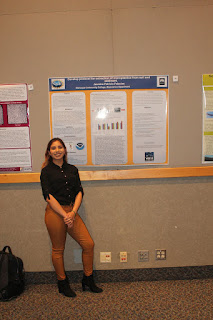Blog Post Week 4
Presentation Title:
Testing for Protocols Extraction of Microplastics from Sediment
Research Question or Hypothesis*
The NOAA has developed a protocol, ,for isolation of microplastics from environmental sediment samples,(Method for the Analysis of Microplastics in Water Samples (2016) .Micro Plastics are plastics particles smaller than 5.0 mm in size. There are two main ways microplastics are formed and enter the body of water: primary and secondary microplastics. Primary microplastics consist of manufactured raw plastic material; virgin plastic pellets, scrubbers, and microbeads that enter the ocean via runoff from land. Secondary microplastic occur when larger plastics items enter a beach or ocean and undergo mechanical, photo and/ or biological degradation. The degradation breaks larger pieces into progressively smaller plastic fragments which eventually become undetectable to the naked eye. The purpose of this research is to determine how effective the NOAA protocols are for removing microplastics from sediments. It is hypothesis is that the NOAA protocols will only be effective for certain types of plastics. Based off of this experiment the NOAA protocol may be modified to make the extraction of microplastics from sediment more effective.
Research Plan –
In order to test how effective the NOAA protocol is the seven types of plastics will be made into microplastics. Known amounts of the microplastics will be added to sediments. Then using NOAA protocols the microplastics will be recovered. Effectiveness of the NOAA protocol will be determined by the percent recovery of the previously added microplastics. This will be done for all seven types of plastics.
Explanation of the Importance of this Project*
The ingestion of these tiny particles can prevent animals, from consuming their natural prey, leading to starvation and even death. These sea creatures also face survival threat that this debris may be toxic. It is important to learn more about this topic because the increase of microplastics, not only affects sea animals but could also affect people who consume seafood. Microplastics can also carry harmful bacteria and toxic chemicals. 

Comments
Post a Comment